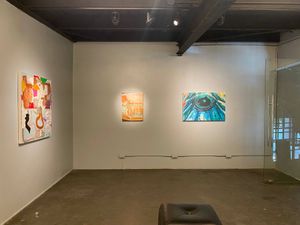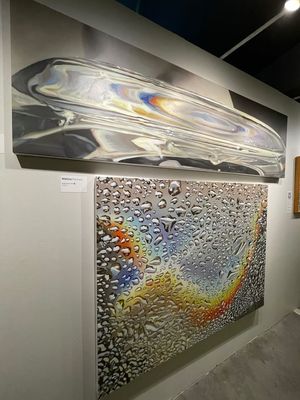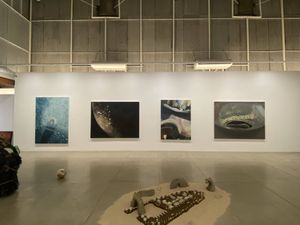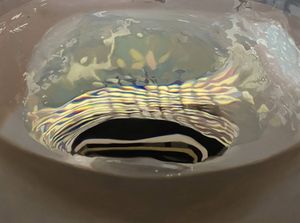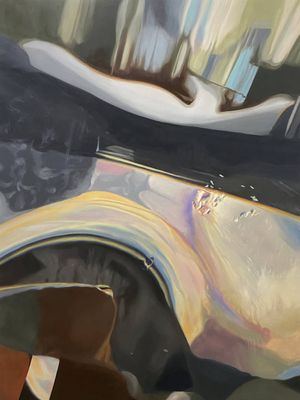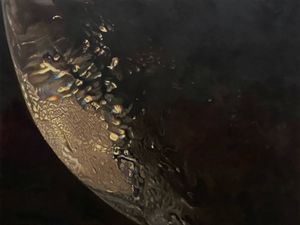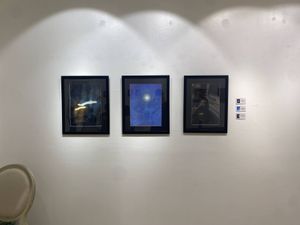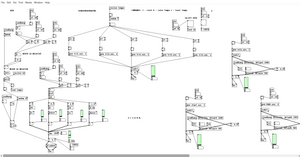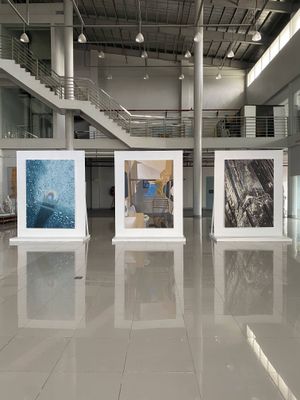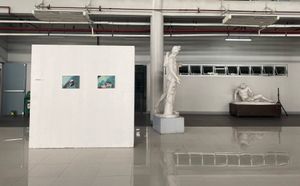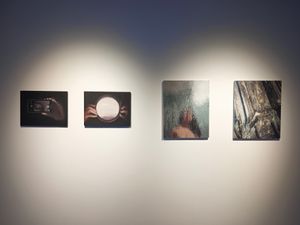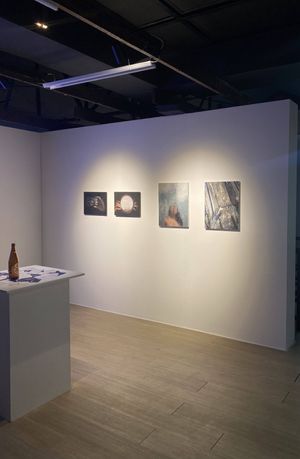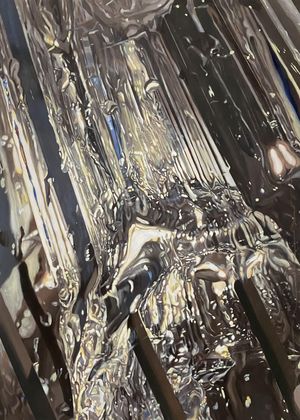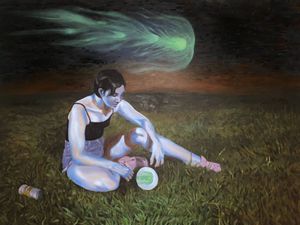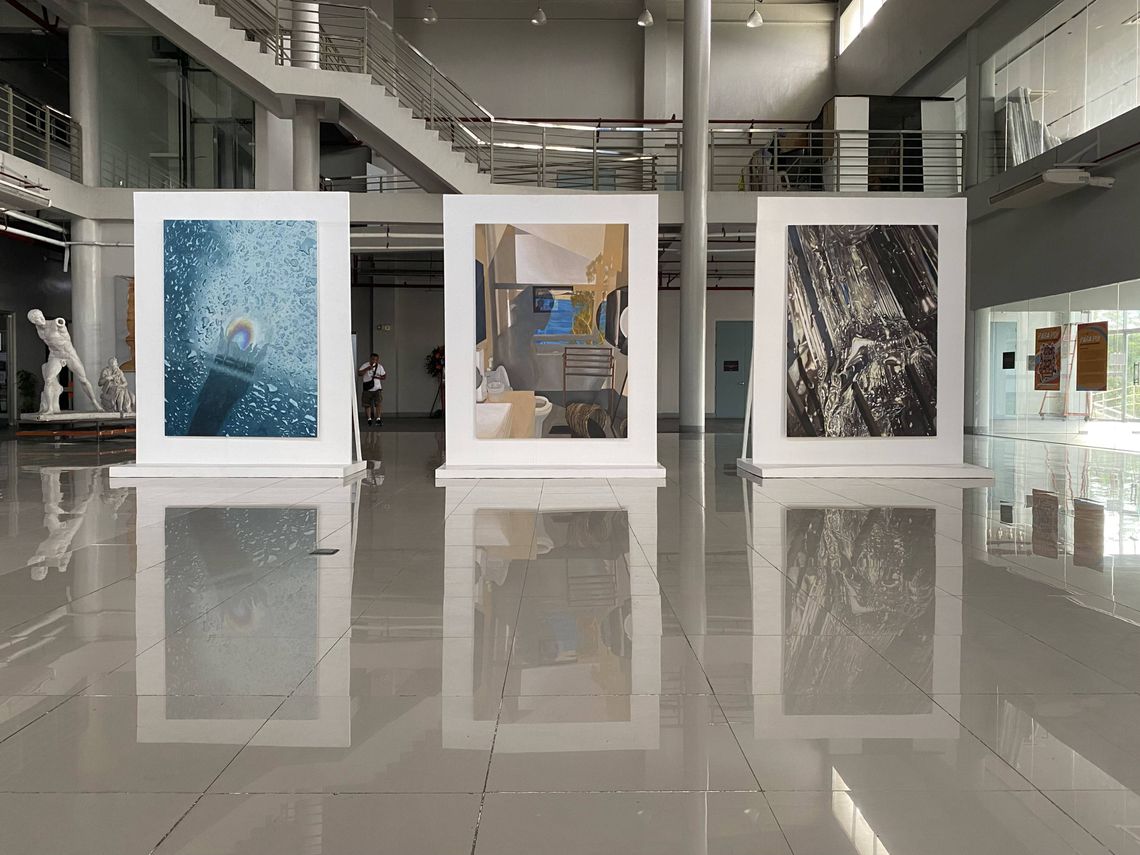
MIRROR.VERSE
BFA Thesis Exhibition at the University of the Philippines College of Fine Arts atrium, June-July 2023.
Each one of us is both perceiver and perceived, subject and object. I am interested in how these roles interface with one another, and, what the act of painting photographs of reflections and refractions can teach me about the nature of perception.
There is a wonder and sublimity in a vision of light that is mediated by water. I have known it for as long as I can remember, having grown up as a swimmer. I turn to the model of the Greek myth of Narcissus, another child of water, as a guide. Greg Stone wrote, "Narcissus is in effect his own art object, as he seeks to find the universal in that reflection of the pool. The water displays an unfiltered idea, what the poet Muclair calls the 'union of the knowing and the known, of the perception and the perceived.'"
This union is known as an oceanic feeling, a term coined by the playwright Romain Rolland. It is an act of introspection-turned-expansion, akin to the Siluetas of performance and film artist Ana Mendieta.
All the works in this thesis are painted from photographs. I believe that smartphone photography is a potent tool and record for understanding the nature of perception. Our phones are portable, and can take snapshots in next to no time. But when transmuted into paintings, these images take on a presence and dignity of their own.
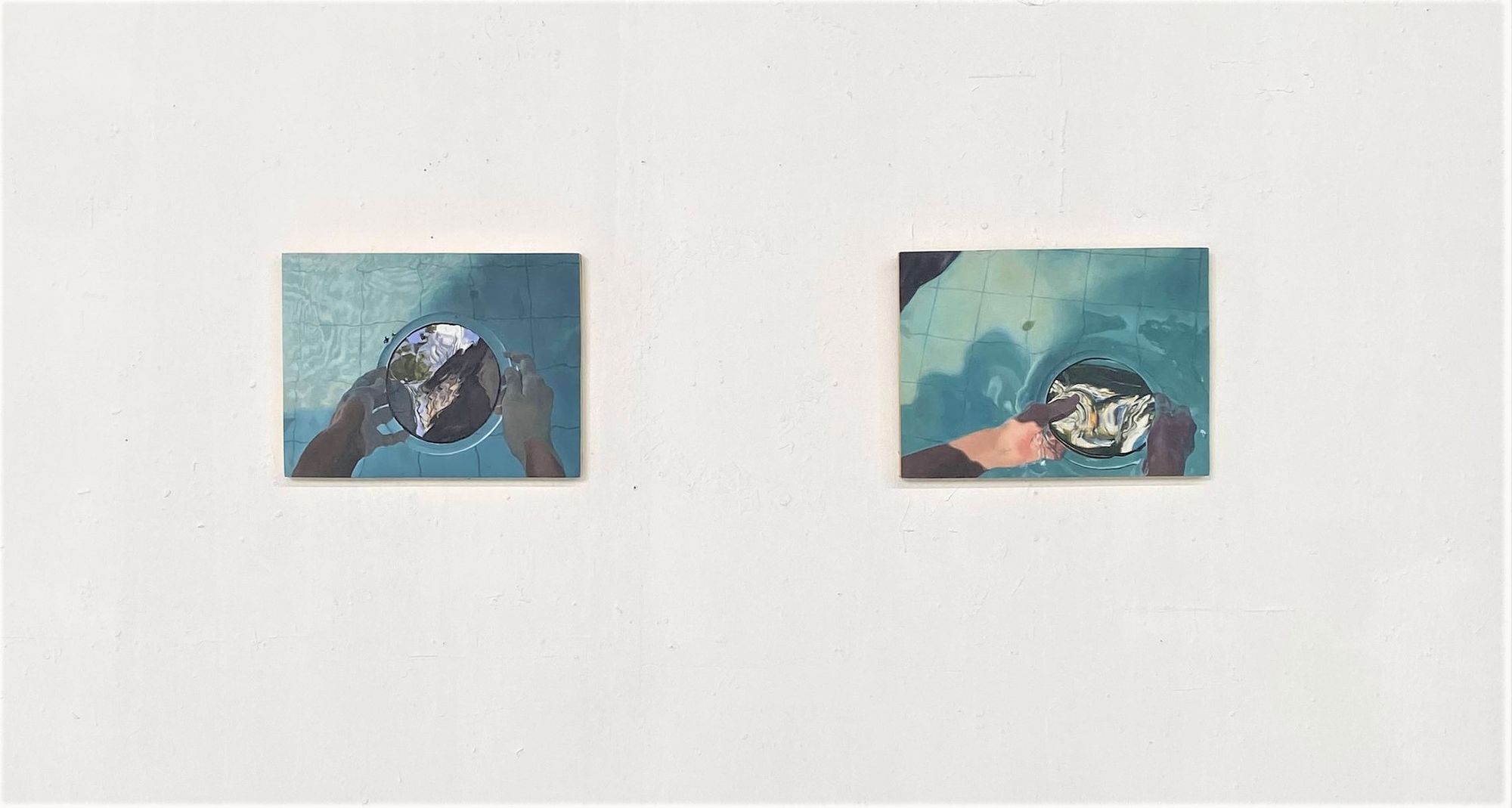
The two smaller paintings, titled Narcissus I and Narcissus II, signify a departure from the traditional iterations of self-portraiture. Instead of the face being the main signifier of the presence of the self, a mirror submerged in water, bends and blends the side of my head with the surroundings, intermingling my form with the trees, the sky, and the clouds. I explore the refraction of light by water, and how it splits into pure hues of blue and orange. The word refraction comes from the Latin frangere, meaning “to break”. Think of the distorted self-portraits of photographer Laurence Demaison, who uses a water tank to obliterate her image as a unified whole.
As for the larger paintings, Oil stain on the hood of a car, 10.13.2022 was, for me, an exercise in paying attention. No two drops were identical, but they all held a family resemblance to one another, like letters in a language of water. What I didn’t realize at the time was that in the process of taking the reference photo, I blocked the sunlight and cast my shadow over the area. Even when I didn’t intend to, I left a visual imprint on my surroundings.
In Sun-drenched, I play with the ability of glass to both reveal and reflect. Two reflections nestled together result in a sort of visual Russian doll. This painting references Echo, the nymph who loved Narcissus, and faded away until she was just a voice that repeated the words of others. I posit that an echo is a sonic reflection, and moreover, that we reflect other people, especially those we love. We are all mirrors unto each other. This photo was taken in the bathroom of somebody close to me.
Finally, glass and water break light apart and resolve it into an image evoking the experience of the sublime. The materials melt away familiar shapes and transform the edges of light into pure color, sheer experience. The image references the stained glass windows of old cathedrals, which were designed for the very purpose of evoking the presence of the divine. Hence the title, Gothic Glass.
Painting is therefore an act of expansion:
Of space, as the photo from a 5-inch phone display is blown up to dimensions almost 300 times the original,
Of time, as a split-second capture turns into a painting requiring long hours of labor and focus, and finally,
Of consciousness, as the images themselves confront my understanding the interplay between myself and my environment.
The paintings respond to the space of the atrium in several ways. The vast glass windows allow light to stream onto the tiled floors, reflecting the paintings and expanding their visual presence. I was also drawn to the acoustics of the atrium, which are conducive to echoes. The geometry of the space and the paintings are aligned, rectangular glass and tile harmonizing with the shapes and orientation of the paintings.
The expansion of an image leads to the expansion of consciousness. The image of the self cannot exist in a void, and I cannot yet perceive the external without seeing myself in the picture. The separation between myself and my surroundings is an illusion, a trick of the light.
